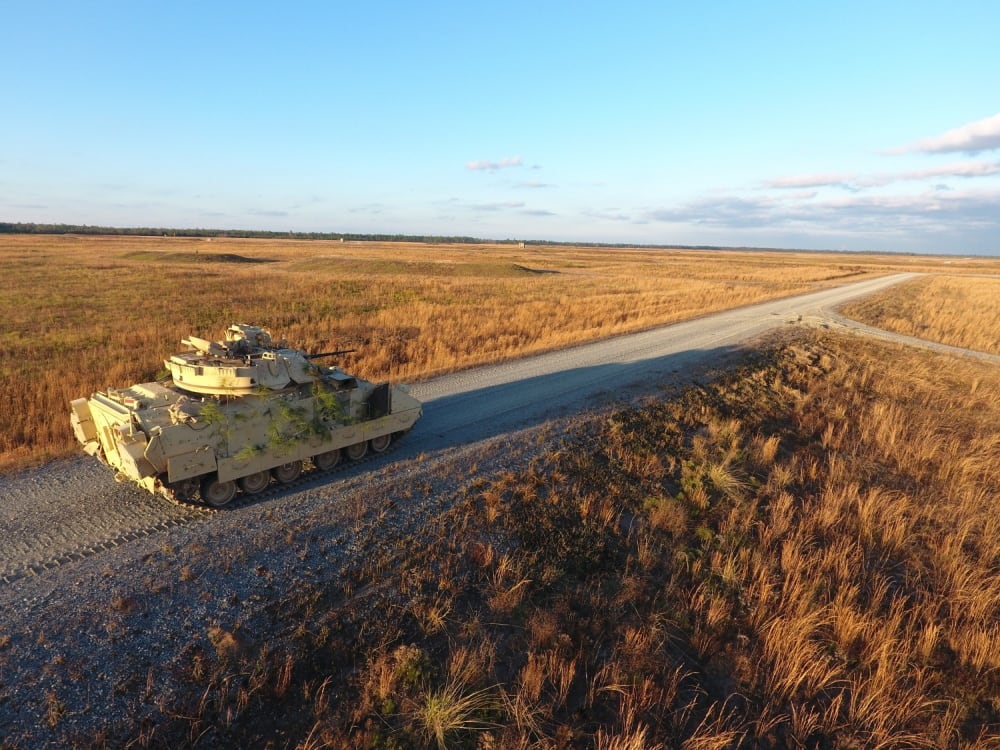WASHINGTON — Mirroring plans announced by the Army earlier this week, the Air Force will rely on small groups of operators and acquisition personnel to expand the success of its Rapid Capabilities Office — which has been responsible for the development of the B-21 — across the rest of its acquisition force.
Earlier this week, the Army announced a massive reorganization of its acquisition enterprise built around cross-functional teams that will spearhead requirements development, prototyping and procurement of technologies like next-generation combat vehicles and rotorcraft.
RELATED

In a similar move, the Air Force is developing a charter that would lay out a model for making mainstream Air Force acquisition programs look more like RCO programs, said Lt. Gen. Arnold Bunch, the service’s top uniformed acquisition official.
“It would streamline the reviews, it would form a board of directors for those certain programs along the line of what the RCO executes to today,” he said in an exclusive Oct. 10 interview with Defense News.. “The goal of that is cross functional, multi-disciplinary teams … smaller teams that are empowered to make decisions and go forward.”
The Rapid Capabilities Office was formed in 2003 to expedite important, often classified programs while keeping them on budget. Some of the RCO’s most famous projects include the X-37B space plane and the B-21 Raider, which recently completed its preliminary design review. The RCO’s streamlined, flat structure is seen as critical to its success, as is the office’s ability to keep requirements stable and work alongside operators.
While the RCO has been responsible for many thriving programs, the Air Force shouldn’t have to rely on it for every acquisition effort, Bunch said.
“I need to inoculate that culture across the acquisition enterprise so I don’t have to go to one shop to go fast or to be creative or to take risks,” he said. “You shouldn’t have to go to one organization every time I want to do something fast.”
The Air Force has already selected a handful of programs to be run by small, multi-disciplinary groups that, like RCO, can adhere to a more flexible mode of operation.
One of the few programs that isn’t classified is the Air Operation Center Pathfinder project, where a cross functional team comprised of members from the AOC program office and innovative groups like Defense Digital Services and Defense Innovation Unit Experimental (DIUx) will use agile software development practices to address challenges in updating and writing new code.
The service has also started using some agile development on the Distributed Common Ground System and for about six different programs in the program office for business systems, Bunch said.
“We’re trying to make a move away from a traditional acquisition serial approach to more of an agile sprint-based type of approach. That also includes the need for multi-disciplinary teams,” he said. “You’ve got the operators and the coders and the testers and everybody working together to get through that four to six months, whatever sprint you agree to, push something out to the field and then go in to the next one.”
If successful in those programs, the Air Force could consider expanding its use of cross-functional teams once the charter goes through the accord process.
The Air Force is also keeping a close eye on how the Army is changing its acquisition structure.
“I have already reached out to my counterpart to get … some background information about what they’re trying to do, just so I’m aware,” Bunch said.
Valerie Insinna is Defense News' air warfare reporter. She previously worked the Navy/congressional beats for Defense Daily, which followed almost three years as a staff writer for National Defense Magazine. Prior to that, she worked as an editorial assistant for the Tokyo Shimbun’s Washington bureau.








